We recently hosted our first ever Google News Initiative (GNI) and FT Strategies EMEA alumni summit: News In the Digital Age. It was such a pleasure and honour to host so many publishers that have participated in our GNI programmes for a day of community-building and knowledge-sharing with insights from leading media executives, editors and industry trailblazers from across the news ecosystem.
One aspect that we hope everyone enjoyed were our panel discussions and breakout sessions. Within these, we provided an opportunity to deep dive into core themes that the news industry is facing. Here’s a recap from our team members on the core ideas discussed and some interesting thoughts that arose from the discussions.
Feel free to jump to any of the panels to learn more:
- Health and future of news publishing in EMEA
- Accelerating data and insights capabilities
- Organising for growth
- Towards a privacy-first future
- Scaling reader revenue
- Improving audience engagement and retention
- Striving for audience diversity
- Building a high-performing team and culture
- Designing and launching new products
- Rethinking media formats
- Engaging Gen Z
Health and future of news publishing in EMEA
The sustainability of the media industry is something that preoccupies every publisher and journalist, both from a business and moral point of view. This panel set out to answer the big question of ‘how can we ensure, essentially, the future of news?’.
Though this is a question that requires a lot of thought, insights and reliable measurements, the panel consisting of Lisa MacLeod (Principal and Head of EMEA Engagements at FT Strategies), Rasmus Nielsen (Director of Reuters Institute for the Study of Journalism), Douglas McCabe (CEO & Director of Publishing and Tech at Enders Analysis) and Shweta Bhandary (Ecosystem Strategy and Digital Growth Programs, News Partnerships at Google News Initiative) drew some key takeaways:
- The series of crises that have occurred in the past years have changed the face of journalism and the way people consume news. The blurring of the distinction between ‘news’ (general) and ‘the news’ (hard news) that has emerged underlines the need for publishers to distinguish themselves from the rest of the internet, to find their niche, and their core value-add that drives engagement.
- While keeping in mind their purpose and mission, publishers also need to focus on local news and local communities. Research after research has in fact shown the link between the health of local media and democracy.
- While there are major challenges and obstacles in the Middle East and Africa, these are rich regions to learn insights and valuable lessons from, due to the ability of publishers to adapt and be flexible within ever-evolving political and economic challenges, as well as rapidly changing consumer habits. As Rasmus pointed out, their efforts to transform is ‘born in the fire’, quite literally in some instances.
- It is true that young people are losing trust in traditional media which is also shown by an increase in selective news avoidance - but that doesn’t give a full picture. Rasmus pointed that the reality is that larger social and political forces are at play and creating the backdrop to an overall lowering of trust in institutions, of which media is just one node of. It is in this context that having a deeper understanding of the behaviour of underserved communities and the media can help shape publishers' strategies to reach these communities. Douglas mentioned that it is historically true for example that young people tend to not engage with ‘the news’, yet today’s youth have a much wider media diet than before; meaning they might incidentally be consuming news on social platforms, presenting a unique opportunity.
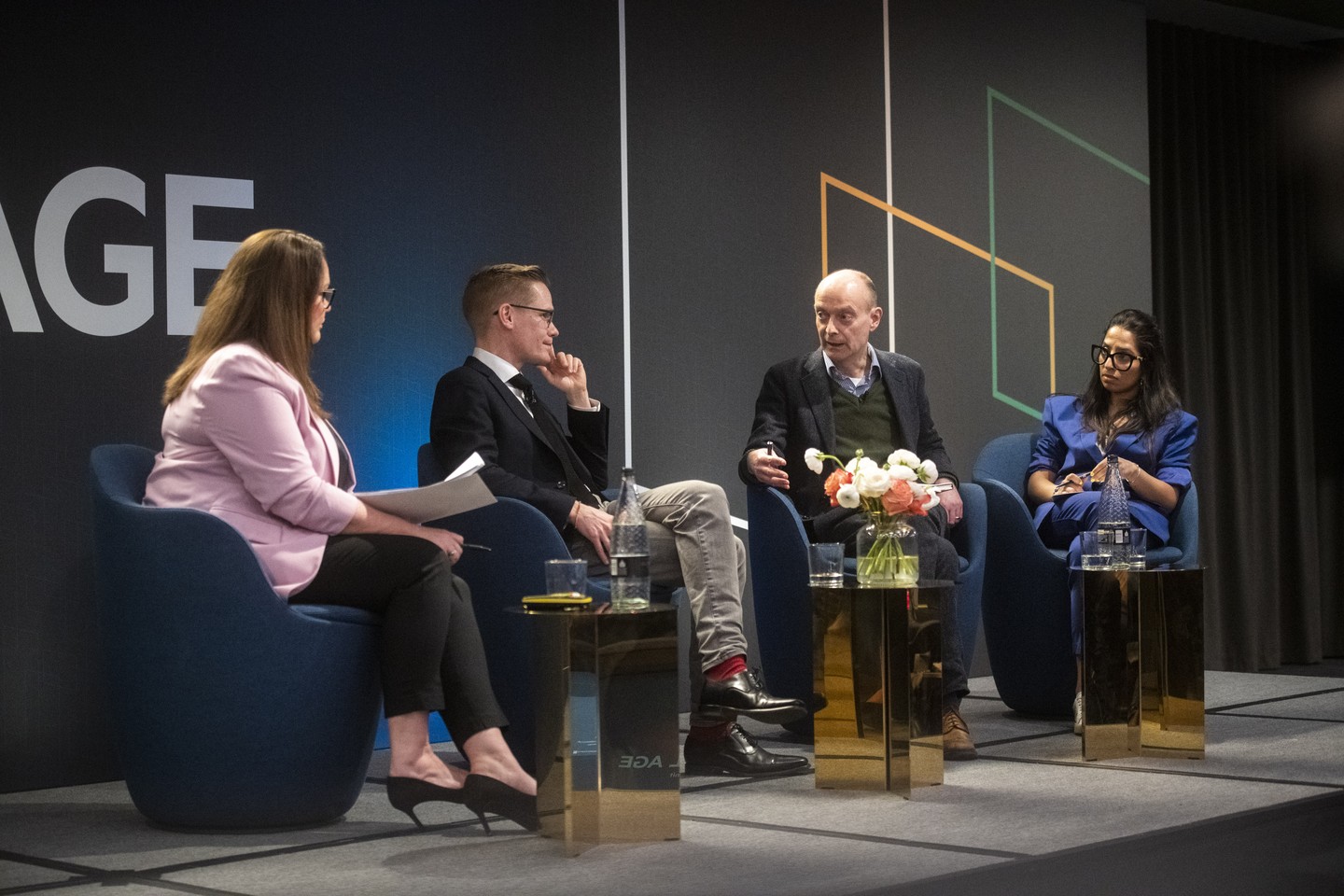




Accelerating data and insights capabilities
The panel set out to discuss the essential requirements for building a data culture, aiming to share practical examples of how publishers, especially small and local publishers, can make the most of their data and embed it into their decision making. Some of the interesting takeaways we learned from this session include:
- Most newsrooms are comfortable with volume and content metrics, but are now trying to understand users and habits. Florian Stambula, Head of Product at Der Standard, shared how their large comment community helps to keep them focused on readers, especially on their ‘super-users’, a group of highly-engaged commentators. They have metrics on community activity and also gather feedback on content and product from these users.
- Publishers trying to build a data culture need to build and protect trust in data within the organisation, as some are overwhelmed with all of the data available. Valentin Cornez, Global Lead and Co-founder of Google Insights at The Google News Initiative, shared that small newsrooms look for data tools because they often don’t have the budget to hire dedicated analytics resources. The NCI report and Google Analytics is a good example of this.
- The panel agreed that access to data is not enough to create a data culture. Oli Elliott, Head of Data Science at FT Strategies, stressed the importance of senior leadership pressing editors and product managers to come armed with data and for analysts to work hard to understand the needs of decision makers that will be using their work.
- Where possible it is important to embed data analysts in Editorial and Product so they gain deep knowledge of those departments’ needs. Lucy Alexander, Director of Insight Analytics at the FT described how analysts within her team are still closely attached to a central team but gain the rigour and company-wide knowledge from this set-up.
Organising for growth
Setting an ambitious goal and developing the rest of a North Star framework is just the start of the journey towards a profitable and sustainable direct-to-consumer revenue stream. However, establishing organisational structures and processes to support North Star is vital, otherwise there is a danger that it becomes just another target, another layer of administration. These should work to deliver the four key principles of organising for growth: empowerment, collaboration, transparency, and being evidence-based.
The panellists Isabelle Campbell (VP of Portfolio and Programmes, Product and Technology, Financial Times), Leo Xavier (Director of Product Management, Observador), and Nicholas Holmes (News Ecosystem and Strategy Manager, EMEA, Google) discussed three main themes:
- Organising for growth is a constant and necessary endeavour. The Financial Times has been on this journey for many years and is proof that you can never fully ‘achieve success’ but must exist in a state of perpetual forward motion. Communication is a key facet of whatever an organisation does first, which is why getting representatives from different departments together in the same room to plan the journey is vital, but is not enough alone. All colleagues must feel that they have permission to deliver their work within the North Star framework, and then real collaboration will start. Having a common language such a group eases the path to collaboration - for all three panellists’ business, data was this common language.
- There are practical first steps that publishers of all maturities can take to embed these principles. Finding platforms to share information will help data become a common language across an organisation - dashboards, email updates and in-person learning sessions are all good places to start. Equally important is creating space for experimentation - staff are always busy, but given the right autonomy, innovation can flourish. Please refer to FT Strategies’ report The Art and Science of Experimentation for Growth for even more examples. Whatever first steps a publisher takes, meeting regularly internally and working out problems as a collective is a must.
- The wider industry offers a wealth of examples of initiatives that can be borrowed and adapted. It is both encouraging and disconcerting that so many publishers, of all sizes, face the same problems and will probably benefit from similar solutions. Therefore it is very relevant to share methodologies and learnings; publishers should always seek to collaborate with their peers across the globe. They can also take inspiration from large businesses such as Google who place a premium on office design (for example, micro kitchens have led to increased collaboration) and their use of OKRs to deliver a global ambition. Further examples are provided in FT Strategies’ report Organising for Subscriptions Growth.
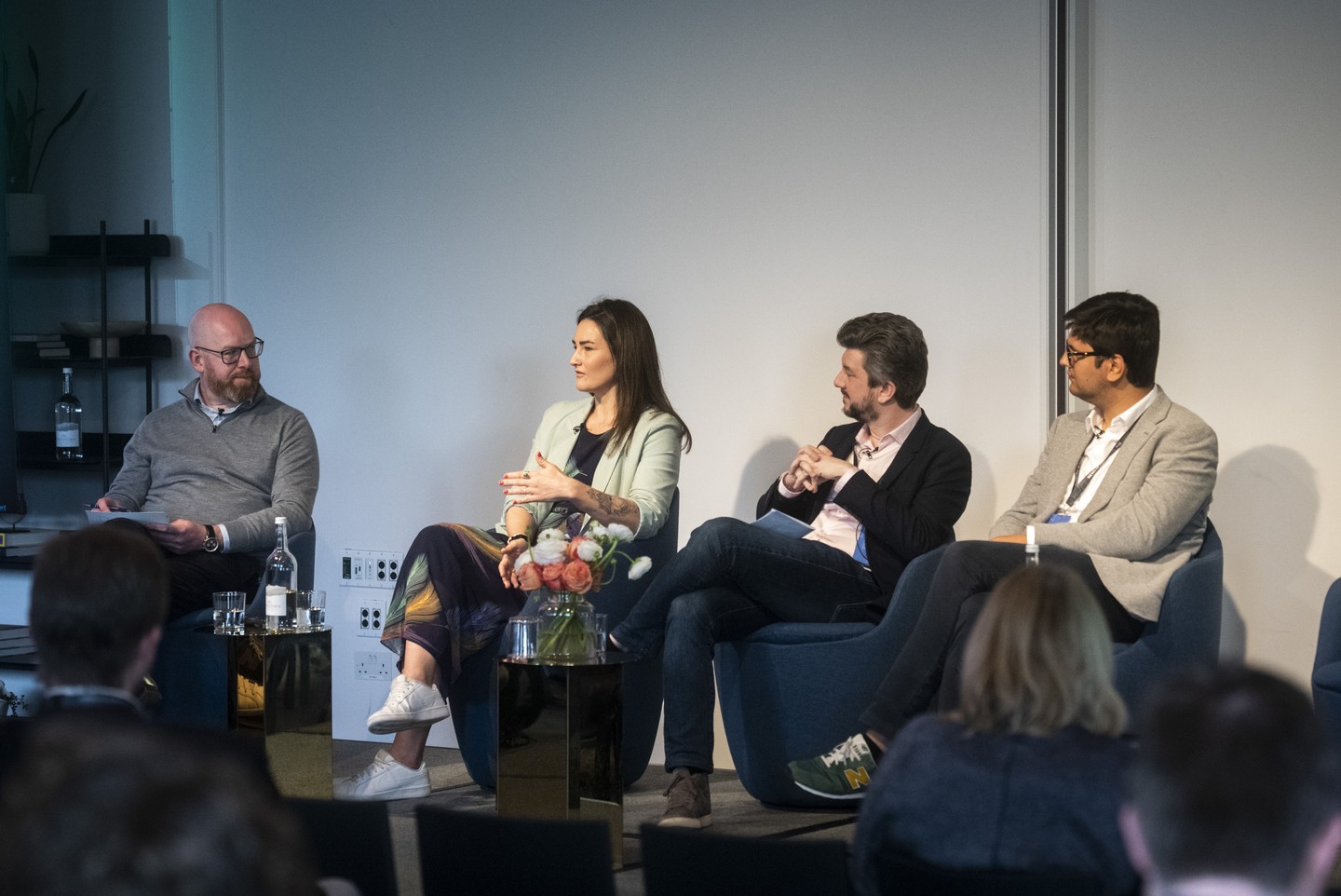




Towards a privacy-first future
Privacy regulation, changing consumer behaviour and restrictions of online tracking (including third-party cookies) is already upending existing marketing and advertising practices - and the impact is only going to get greater.
The panel, comprising Hanne Tuomisto-Inch (Head of Privacy & Chrome partnerships at Google), Joe Root (CEO and co-founder of Permutive) and Katrina Broster (Marketing Performance & Technology Director at FT) had a lively discussion around three core questions:
- What exactly is the impact? Apple’s iOS changes and required cookie consent have already made it very difficult for marketers to reach their desired audiences - only 30% of audiences are addressable via the open web. In fact, traditional marketing tactics (such as cookie-based retargeting) are going to become very difficult when third-party cookies are deprecated. This will lead to reductions in cookie data in the open web, in turn reducing advertising CPMs and overall revenue for those without first party data assets.
- What are the strategies that publishers can adopt to put themselves in a position where they can benefit from these changes? Publishers should work with their ad-tech providers and marketing agencies to better understand (and test) the privacy-friendly technologies that are being designed as part of The Privacy Sandbox initiative. The FT has had a cross-functional team in place for the last few years focused on the future of marketing & advertising and executing on the FT’s first party data strategy. The emphasis is identifying anonymous readers and collecting the demographic data that can support marketing and advertising efforts - both departments are working towards the same goal. Publishers should also experiment with new technologies (such as Data Clean Rooms) which offer a way for marketers to reach specific audiences / lookalike audiences to increase the return on investment from ad spend.
- What does the future hold for data in the context of marketing and advertising? Publishers are uniquely positioned to benefit from restrictions on cross-domain tracking as they own the direct relationships with their audiences and can make them available to advertisers (charging a premium). Cookie deprecation is going to happen and delays are largely the result of the ecosystem requiring more time, as opposed to technological development. Ultimately, this means privacy-friendly solutions will not be optional in the years to come.
Scaling reader revenue
Choosing the optimal access model is crucial for publishers seeking to transition to digital-first reader revenue models. Key to this process is having an openness to explore and experiment with the potential of new digital platforms and iterate as more is learned about readers’ user needs. Moderated by Jon Slade (Chief Commercial Officer at The Financial Times), the panel comprised of Cliona Mooney (Subscriptions & Reader Insights Director, The Irish Times), Richard Furness (Chief Strategy & Business Development Officer, The Guardian), Barbara Kaija (Editor-in-Chief, New Vision) and Eero Korhonen (Lead, Partnerships & Ecosystem Strategy, News & Publishers, EMEA at Google), each discussing their opinions on what publishers need to learn about their audiences in order to land on reader revenue models that can truly work for their business:
- Cliona Mooney spoke about how through experimentation, they were able to identify an entry point amongst Irish diaspora readers. International readers consume content differently to those who live in Ireland, with Irish Times news typically being more of a secondary source of information. Through participating in the Subs Academy programme with the FT Strategies team, Irish Times ran an experiment targeted to readers in London who are Irish, commissioning content specifically for this audience. Sponsored posts on Facebook promoting to a London audience were run, alongside the same level of promotion for “control” content (ie: regular Irish Times content, not specifically curated for this audience). The findings showed that London-specific content drives more pageviews and engagement from London readers than regular content, and is most popular with London readers.
- Richard Furness explained how The Guardian’s approach to the messaging of its mission cultivated a stronger relationship with its readers. Being open and transparent about The Guardian’s mission of supporting independent journalism creates a bond with readers which speaks to them on an emotional and personal level while ensuring an organisational commitment to free access via their donations. Experimenting with this messaging over time has kept the approach fresh as readers’ needs evolve over time and as the news media landscape changes.
- Barbara Kaija spoke about overcoming the challenges of launching reader revenue models in a nascent market such as Uganda. Having previously experimented with an ePaper to limited success, Covid-19 accelerated plans for a relaunch of the digital subscription system. However, adding a paywall led to a drop in uptake and circulation. New Vision Uganda’s participation in the Digital Revenue Launchpad programme led to the creation of a cross-functional core team, supported during the programme by FT Strategies. New Vision Uganda benefited from support with planning the next digital reader revenue project and the creation of the Vision Group’s North Star goal, including initiating several experiments aimed at validating hypotheses centred around reader revenue.
- Eero Korhonen highlighted the importance of creating an organisational culture that drives growth across the business. Having spoken to two publisher executives who had both been highly successful with growing digital subscriptions, Eero identified that the key success factor for both was changing their organisations’ cultures towards a collaborative, data-driven mindset. Sharing data across the entire company enabled people to see business-critical data for themselves. This created a sense of cohesion across departments; making analytics accessible to journalists enabled them to see what type of content would move the needle and have impacts across the business.
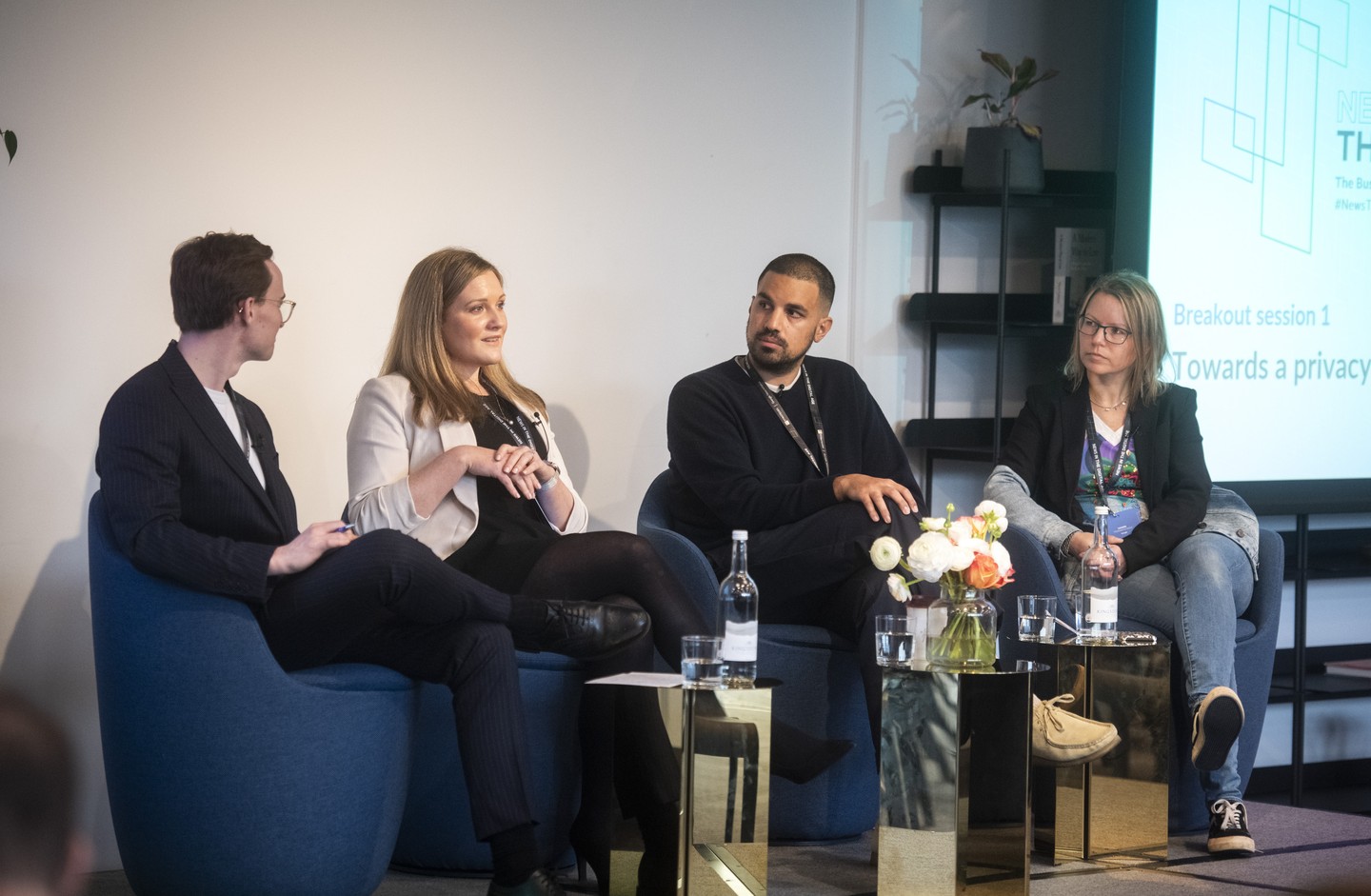




Improving audience engagement and retention
AT FT Strategies, we constantly talk about the closely tied relationship between reader engagement levels with their retention and propensity to churn. This panel focused exclusively on this topic, trying to understand how you can improve audience engagement to ultimately increase the key business metric of lifetime value. This panel comprised of Jonathan Knight (Head of Games at the New York Times), Mathew Payton (Head of SEO & Planning at the FT), Mathias Douchet (Product Director at The Telegraph) and Valentin Cornez (Global Lead and Co-founder of Google Insights Tools for Publishers), talking about their own areas of expertise:
- Jonathan Knight spoke about how the pandemic was an inflection point for games. Prior to 2020, NYT had seen increasing subscriber growth from a more social, mobile-first, and younger audience driven by their interest in Spelling Bee. This helped instil an understanding of the big opportunity of Games as a category within all levels at NYT, ultimately leading to the acquisition of Wordle. Wordle continues to be popular with the subscriber-base even if you see it less on your Twitter feeds, as that engagement has now moved to private channels like Whatsapp where friends continue to share their Wordle results in private chats. Ultimately, NYT finds that subscribers who engage with both the News and Games on a given week have particularly strong retention rates.
- Matthew pointed out that what is important that a reader knows and what is their current interest are different, and must constantly be balanced within a newsroom. Although easier at the FT given its specialist niche, focussing on what is important and distilling key stories must always take precedence, and in doing so, that enables you to better cater to moments of extreme peaks of interest, such as the fate of Crypto during the FTX collapse. The reason being your reader understands the context of that story within wider trends. However, promotion is a different beast. For example, Brexit is still top of the most-read topics for FT readers, but it is not promoted heavily on Instagram as it does not work well in bringing in readers. Lastly, Matthew pointed out that a key aspect of engagement is reader comments, a growing value-add for publishers if (1) commenting spaces are guided by clear community guidelines and (2) journalists can interact with comments.
- Mathias was bullish about the possibility of increasing the current rough average of 10% of the UK population paying for news. He pointed out that more and more readers are starting to understand that you need to pay for quality online news. However, consumers will expect expanded and richer product suites to match that, which at the Telegraph means expanding into for example Telegraph Games, Telegraph Wine.
- Valentin focused on specific tactics that publishers can start experimenting with from newsletters and recirculation, to push notifications. He pointed out that UX is particularly important, and that you would be surprised to see how many publishers have yet to optimise their basic newsletter sign up widgets by embedding them into articles and with an email-only sign-up field (recommendations that can be found as part of the Google NCI tool). Valentin also pointed out that sampling of content is key, as publishers cannot expect readers to understand the value-add without allowing some level of their quality to be provided outside their paywalls.
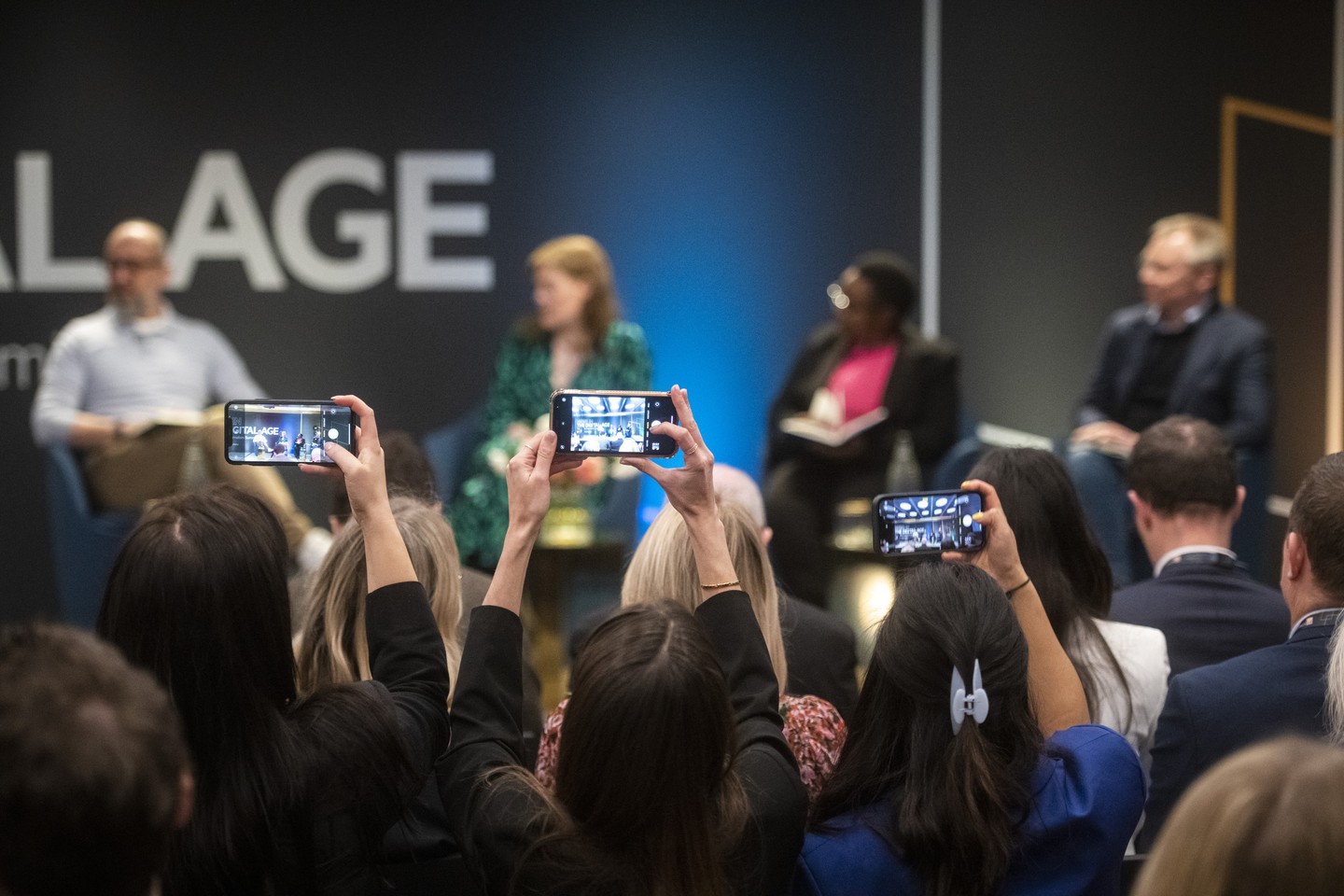




Striving for audience diversity
This panel aimed at moving the conversation of audience diversity away from just being a buzzword. Moderated by Isabelle Sonnenfeld (Head of EMEA at Google’s News Lab), the speakers, Sarah Marshall (Global Executive Director, Distribution & Channel Strategy, Condé Nast), Toyosi Ogunseye (Senior News Editor, BBC/Vice President, World Editors Forum), Luba Kassova (Co-founder and Director, AKAS), and Marijana Sever Tot (Editor of The Sunday Edition, Jutarnji List) looked at the ways in which organisational diversity relates to audience diversity by tapping into new reader segments and creating unique opportunities to reach and represent diverse voices.
Should you walk away only with the biggest tips from our panellists, those are: Challenge the status quo by hiring diverse voices that have diverse sources; bake diversity into the strategy of the entire company, not just the newsroom, and connect it to the commercial objectives with clear targets and measurement tools; get the data in front of people’s eyes on a daily basis - seeing is believing; then focus on a clear communication strategy and how to inspire and educate internally with the data on diversity. And celebrate even the small wins!
The thought-provoking discussion encompassed:
- Diversity must be reflected in your talent and internal make-up in order to successfully understand & engage underrepresented audiences. Sarah spoke about the impact that Edward Enninful has had since being Editor-In-Chief of British Vogue, transforming it to create more diverse stories and covers. Starting simple, for example by creating a Diversity Manifesto, is crucial for teams to understand the social and commercial reason for baking diversity into the strategy. Sarah also spoke about the importance of bringing in guest writers when your team is looking to cover topics outside of the current newsroom composition. Luba spoke about the importance of thinking about change not in silos but across the entire value chain of news, from leadership to newsgathering, to coverage and consumption analysis. Typically, news organisations explore diversity but not inclusion. By thinking about the entire value chain, you can properly audit, assess and ultimately reach a clear diversity and inclusion goal. Marijana, who attended our recent Google News Initiative programme, Audience Diversity Academy, gave an example of how the newly formed Gender Council at Jutarnji List, tackles the issue of gender pay gap and communicates the sometimes-uncomfortable-truths around lack of equity in pay and empowerment at the workplace.
- There is an underlying assumption that by serving diversity, publishers trade off mass audiences - but that is an inaccurate picture. Luba pointed out that diverse audiences are also concerned about the big news agenda (inflation, war, climate change, etc.) but the unique opportunity lies in finding new angles and voices in order to attract new audiences while not alienating the core one. She also pointed out that increasingly the scale play is moving towards value for readers, and this is where diverse perspectives are crucial, as they enable you to reach not just a bigger volume of consumers but the right type. A practical tip here was to focus on creating women protagonists in the stories, as well as a balance in bi-lines and sources to tangibly show representation. Toyosi added that it is key to structure editorial meetings that cater for audience feedback to help break the mould. Toyosi’s point of view argued that, although publishers are improving, it is precisely in these big news events that they can forget the importance of differentiating the angles. She strongly believes that media organisations not only have a social responsibility to reflect the complexity of society and diversity of thought, but they need to be at the forefront of it and drive it forward proactively.
- Measuring audience diversity is crucial, and does not have to be complicated. Marijana spoke about the creation of a gender audience analytics dashboard in Editorial through the experiments Jutarnji List ran on the Audience Diversity Academy. This dashboard has led to a more accurate monitoring and understanding of female reader interests and evolving needs. It is becoming embedded in the daily reporting cycle and is generating awareness and excitement about the topic, beyond the newsroom. This has helped massively in communicating clearly, challenging assumptions and thinking of new innovative story-telling ideas, as well as involving everyone in this journey.
Building a high-performing team and culture
This panel focused on the concept of people and culture, and how to effect change in organisations to ultimately create a high performing team. The panel, which included Phil Chetwynd (Global News Director of Agence France Press) Inga Thordar (Transformation leader in Digital, former Exec Editor of CNN Worldwide) and Matt Cooke (Head of News Labs for Google, formerly of the BBC) brought a breadth of experience from linear broadcasting, digital publishing and global newswires. The discussion brought about with 4 key takeaways:
- Each member of the panel reflected on the challenges on defining and distributing cultural change across multiple territories. Phil frequently underlined the importance of transparency, trust and clarity of the mission at all levels of the organisation.
- Inga spoke passionately about the move towards a more diverse newsroom. There are still unfortunately many examples where diversity is a real challenge and the atmosphere can be very unforgiving for young women and difficult to get into for people from diverse backgrounds.
- Methodology and tools matter. How you set the mission then roll it out, lives and dies by the approach - cultures require love and attention. Everything from layout of office furniture, to investing time with your team socially, to using single tools to simplify communications: it all matters. FT Strategies’ North Star framework is a methodology that enables organisations to achieve a mission and align a team towards that mission. A shared mission and clarity of the role everyone plays is a fundamental tenet of a high performance culture.
- The age where the ‘brilliant jerk’ prevails in newsrooms and wider news media is over, or at least declining. Organisations are getting much better at calling out bad behaviour and employees increasingly have channels to do so. Again, transparency to decision making and making values heard. Ultimately, values are sacrosanct and role-modelling essential.
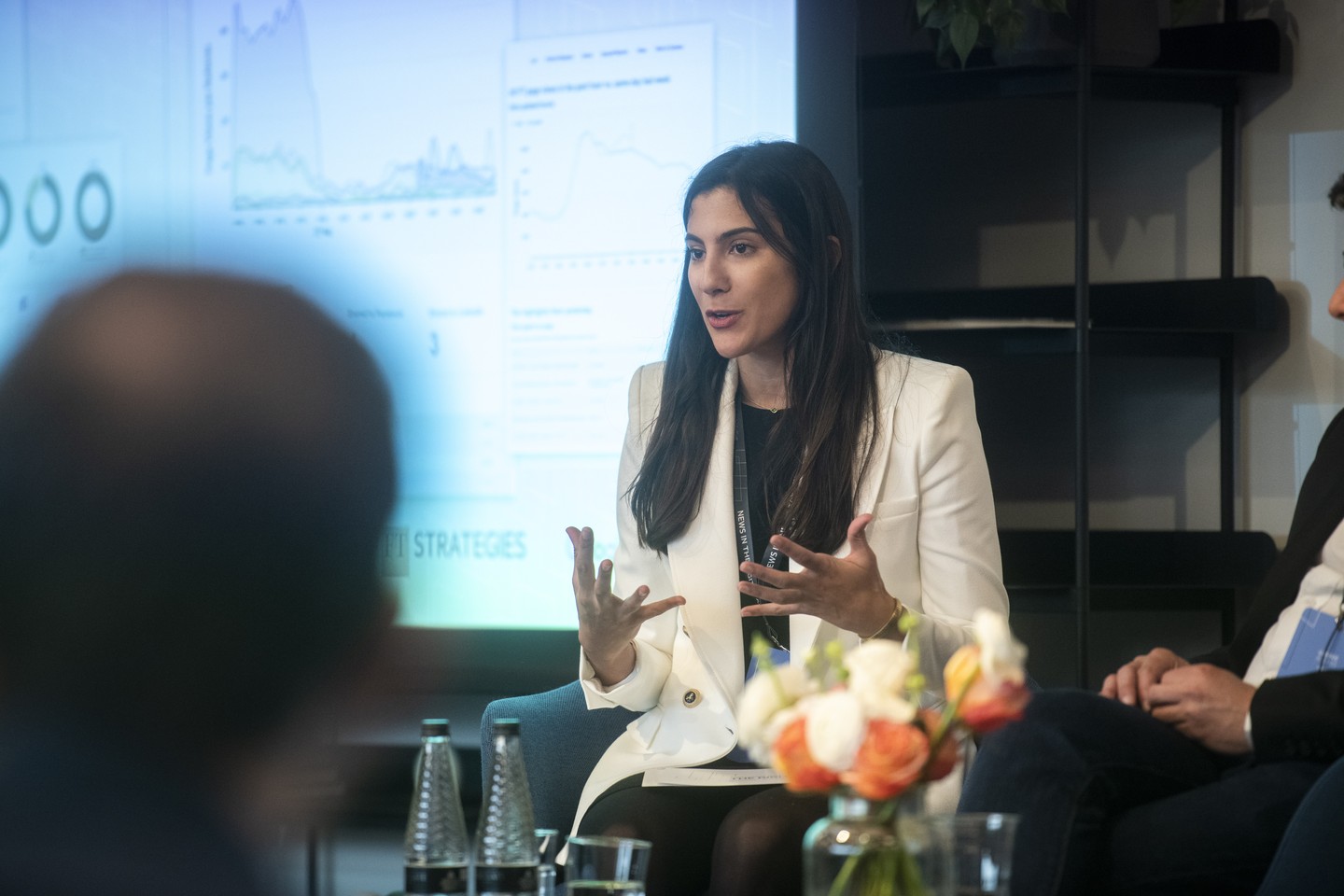




Designing and launching new products
This panel was an engaging conversation between Ludo Blecher (Head of Innovation, Google News Initiative), Dilyana Evtimova (Senior Product Manager, Financial Times) and Pierre France (Founder, Rue89 Strasbourg) on all things product-related.
Dilyana and Pierre each spoke about products they successfully launched within their news organisations. Dilyana spoke about The Edit, an App launched by the Financial Times last year that provides a curated number of stories at a lower price point. Pierre spoke about the ‘Impactometer’ a newsroom insights dashboard developed during two FT Strategies/GNI programmes in 2021. Ludo Blecher contributed with his perspectives from supporting numerous publications globally in launching products.
Despite differences in the scale and product audience, certain commonalities emerged:
- Importance of aligning teams and working cross-functionally with different departments like Data, Product, Marketing, and importantly, Editorial. As Ludo put it, “It’s important to remember that, at the end of the day, the product you are selling is the journalism”.
- Product discovery is a crucial step before development. Dilyana spoke about the extensive customer research and idea validation that went into creating The Edit. The value proposition was crafted directly from customer demand, especially from sources publishers don’t immediately think of: qualitative interviews and focus groups.
- Being data-led but also maintaining journalistic integrity. Pierre mentioned that The Impactometer is used to analyse performance after a story has been published, but that they separate this from the creative process.
- Lastly, the idea that many new products are just modern versions of past ideas. We joked about how Podcasts are just a modern version of radio, and how The Edit was partly based on the idea of completing a physical newspaper.
Rethinking media formats
This panel focused on how news brands can think more creatively about new formats to engage with audiences, especially with the rise of selective news avoidance.
Each panellist showcased examples from their publication across their own areas of expertise, and particularly showcased what user needs they hoped to fulfil via their innovative story-telling techniques.
- Emotive Filmmaking to persuade unengaged audiences. Branko Brkic, Editor-in-Chief of Daily Maverick, focused on the issue of climate change. Branko noted how there is a strong disconnect in audiences in emotionally engaging with the most important stories of our age, feeling disempowered, and therefore tuning away. To counteract this, rather than dive more deeply into explanatory content (something they already do), Branko’s team understood that a story that was able to create an emotional connection was needed. In late 2022, the team decided to create a powerful film to showcase the realities of climate change and social change. Branko’s team bought the rights to Barry McGuire's Eve of Destruction song, hired Anneli Kamfer, a local singer in South Africa, and overlaid it with videos of news reporting on the climate crisis.
- Visual Storytelling as a way to more deeply explain complex stories. Sam Joiner, Visual Stories Editor at the FT, showcased some of the examples of new multimedia storytelling formats the FT has been championing in recent years. Sam explained the power that “scrollytelling” specifically has. “Scrollytelling”, a combination of the word ‘scrolling’ and ‘storytelling’, is a way to dynamically tell multimedia stories that unfold as you scroll through images, video, maps, infographics, and text. He pointed to recent stories such as the FT’s investigation of one of the many collapsed luxury developments in Turkey’s recent earthquakes, or an investigation into El Salvador’s mega-prison giving inmates less space than livestock. He pointed out that these are some of the most well engaged stories at the FT, and importantly, garner positive reader comments such as “..This kind of journalism is why I'm happy to pay for the FT.”
- Social-first content to drive top of the funnel traffic. Jonathan Mackenzie, Executive Producer at Tifo (part of sports publication The Athletic), focused on how Tifo has built a strong following on YouTube which helps drive traffic for The Athletic. Similar to Branko, Jonathan explained that the reality of the attention economy in the digital age will make it that producing great differentiated content is simply not enough. To ‘bump’ people over this attention deficit hump, publishers need to market themselves correctly on the channels where their audiences (and usually, younger audiences) are, especially on social media. That means talking to them in the voice and style that audiences on that platform expect. For Tifo, that has meant focussing a lot on YouTube Video thumbnails, a crucial part for videos to stand out on the YouTube main page filled with other videos from across the internet. He showcased this video on Brighton’s defending style, where the thumbnail, video title and Tifo brand identity worked particularly well together to make it their most viewed video to-date (even over videos of more popular teams such as Manchester United or Liverpool.) This has led Tifo to create and hire a Video Thumbnail Artist, a full-time position focusing on the design of YouTube thumbnails.
- Puzzles & Games as part of a bundle to increase time spent with your products. John Simmonds, Publisher of Puzzles Portfolio at Bauer, focused on the power that puzzles and games have on retaining audiences. John explained how his team is transitioning from their historical print collection of crosswords to digital, praising the effect that Wordle has had on the industry and the vertical itself. He emphasised the importance to focus on having shareable games that do not only make the experience for the users more enjoyable, but also help spread brand awareness to reader segments that could also at first not be interested in your news coverage.
Engaging Gen Z
One of the main challenges for publishers is to understand and serve the preferences, interests and passions of their younger audiences. This panel focused on this segment, their relationship with the media and the tactics that publishers can adopt to meet their needs.
Moderated by Lucy Hedges (Technologies Editor at Metro UK and Travel Show Presenter at BBC), the panel included insights from Elena Corchero (Director of Emerging Tech at Dow Jones Live), Jack Kelly (CEO of TLDR News) and Nic Newman (Senior Research Associate at the Reuters Institute for the Study of Journalism)/ Three were three core takeaways:
- Young people still engage with news, but the form has evolved over the last few years. Young people might have less trust in the media as part of wider scepticism of mainstream media, but they still express an appetite for news consumption and information. Nowadays, they interact with different formats, usually mobile, interactive and easily digestible media, and are interested in topics that they can relate with more closely, meaning personal stories from real people within contexts they understand. It is important to note that these new forms of consumption are additive and do not replace the need for more traditional formats such as text. Jack pointed out that in some way, as a young founder with a non-news background himself, he is the audience to his own videos, which allows him and his team of writers to really deep-dive into whether a concept was explained clearly and “natively” for their main platform, YouTube.
- Publishers often try to use a one-size-fits-all approach when referring to younger audiences, but that isn’t the right approach. Nic explained that the Reuters Institute research suggests that younger readers are like a kaleidoscope - multidimensional in terms of interests, gender, values. This is why publishers need to dedicate resources to engaging this segment of readers - whether that is the ‘Meme Team’ at LA Times or the Next Generation Team at Washington Post. Another tactic is leveraging external partnerships to reach new audiences on new platforms - for example, Dow Jones recently partnered with Netflix to launch a documentary series on “Eat the Rich: The GameStop Saga”. The benefit there is not only to reach new audiences, but also to learn from others about new technologies that enable new storytelling formats such as VR, AR, Vertical Videos.
- Explainers might be an untapped opportunity for publishers to help young people make sense of the world around them, without leaving them overwhelmed. Jack spoke about how his team thinks deeply about how to avoid sounding alarmist and using hyperbolic language, but rather introduce the characters and the narrative. Ultimately, many young readers still want to know about what is going on - it’s just they cannot access that information in a suitable form. Simplicity and accessibility are not the same as ‘dumbing-down’.
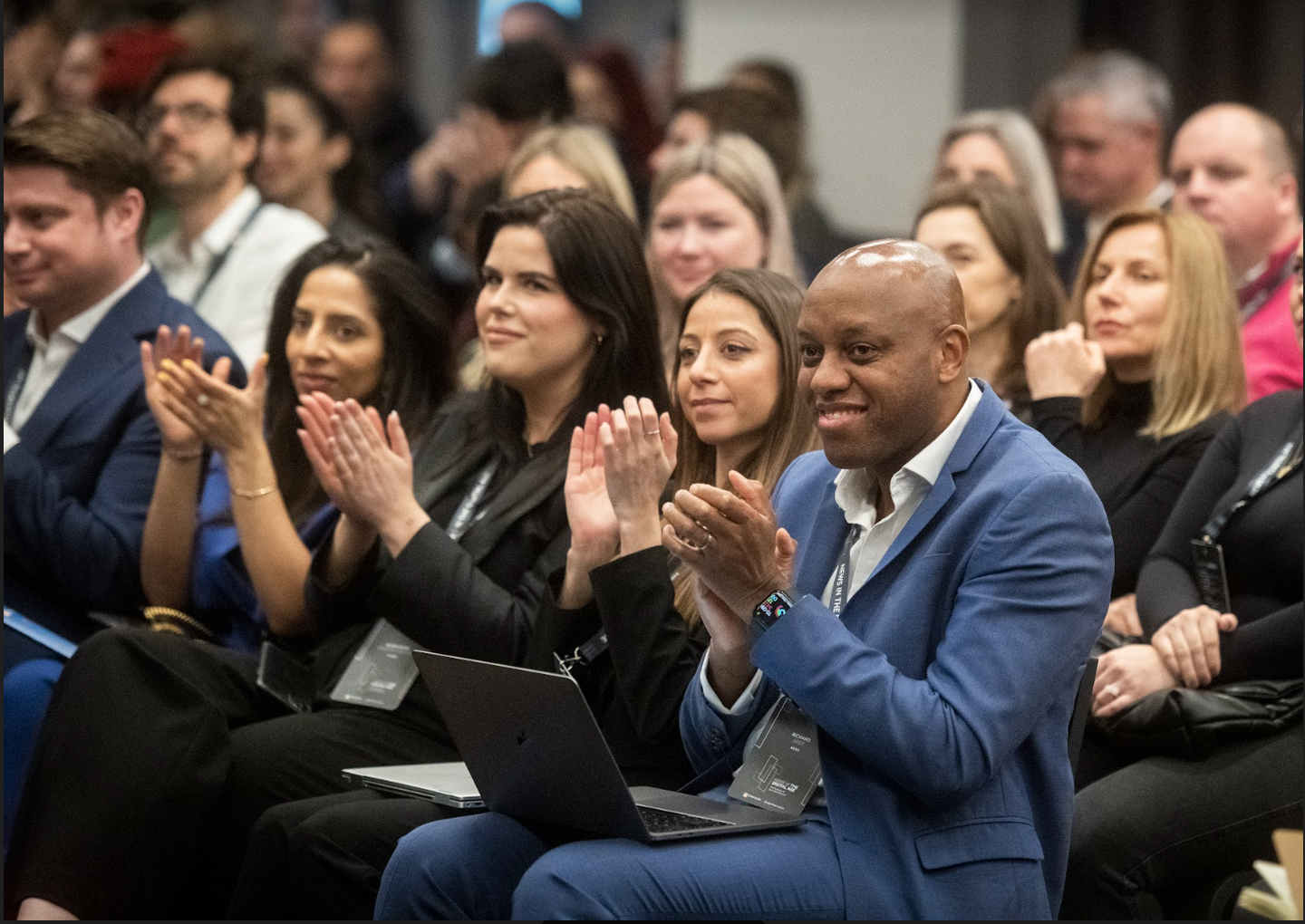




We hope you enjoyed a recap of the panels at the News in the Digital Age. If you would like to chat about any of these topics with our FT Strategies expert consultants, please do drop us an email at ftstrategies@ft.com.
